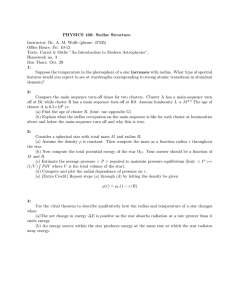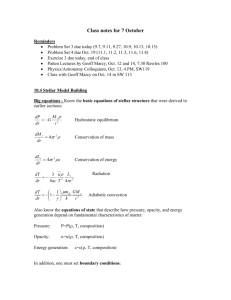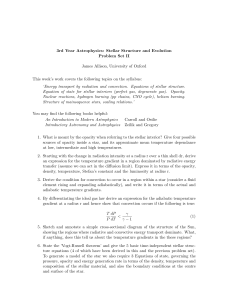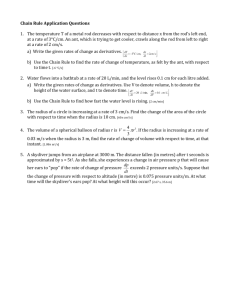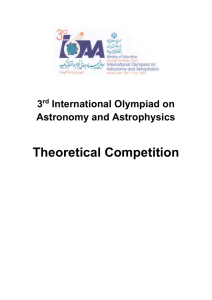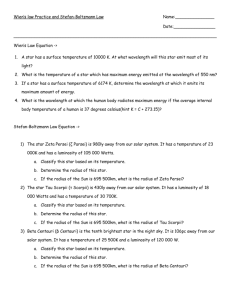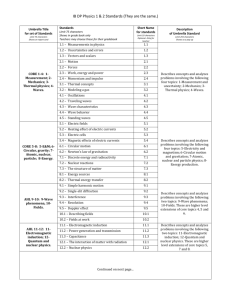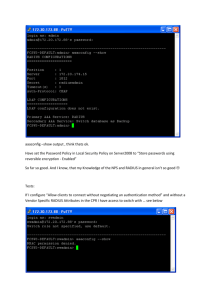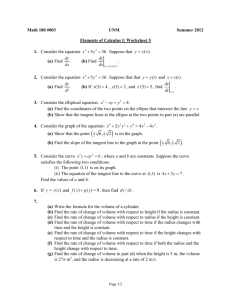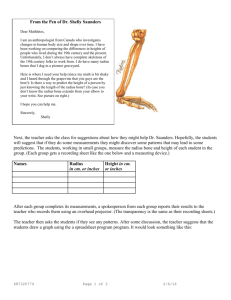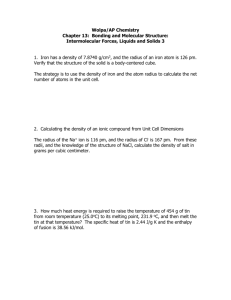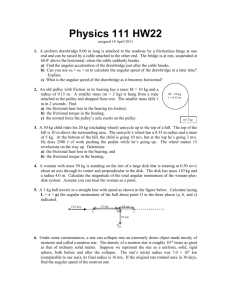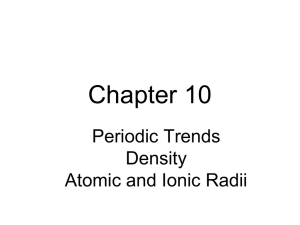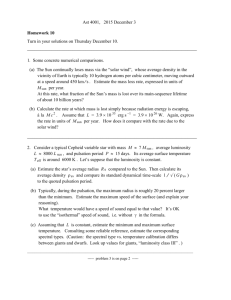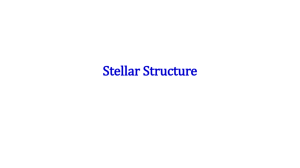AS3003: Stellar Physics: Stellar Structure
advertisement
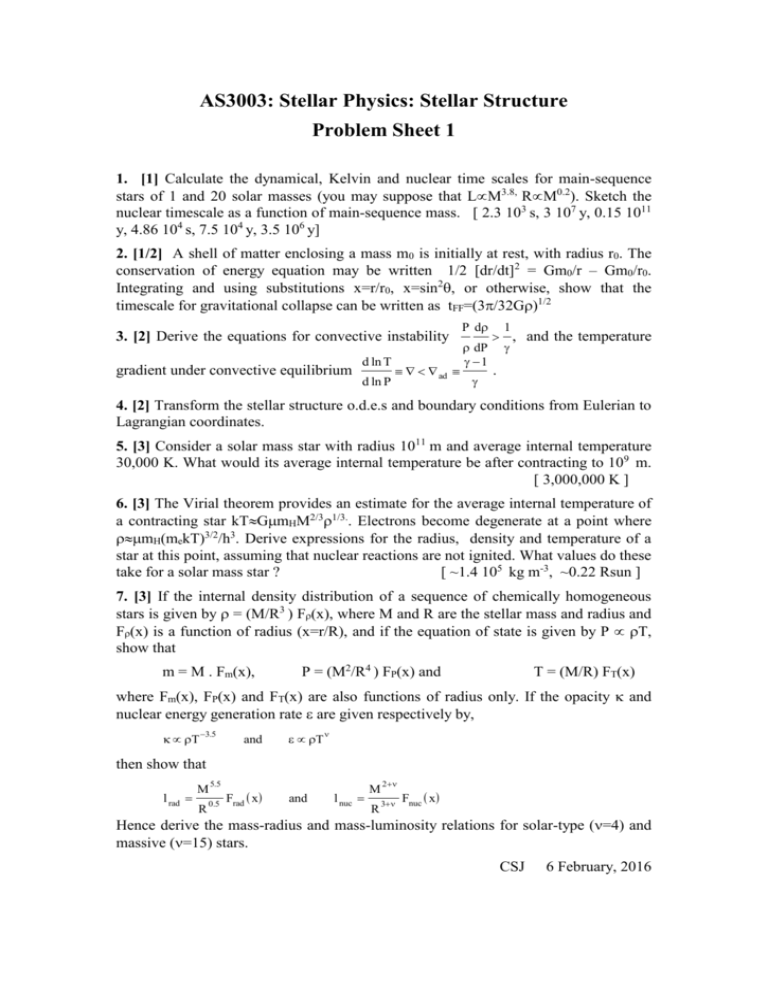
AS3003: Stellar Physics: Stellar Structure Problem Sheet 1 1. [1] Calculate the dynamical, Kelvin and nuclear time scales for main-sequence stars of 1 and 20 solar masses (you may suppose that LM3.8, RM0.2). Sketch the nuclear timescale as a function of main-sequence mass. [ 2.3 103 s, 3 107 y, 0.15 1011 y, 4.86 104 s, 7.5 104 y, 3.5 106 y] 2. [1/2] A shell of matter enclosing a mass m0 is initially at rest, with radius r0. The conservation of energy equation may be written 1/2 [dr/dt]2 = Gm0/r – Gm0/r0. Integrating and using substitutions x=r/r0, x=sin2, or otherwise, show that the timescale for gravitational collapse can be written as tFF=(3/32G)1/2 3. [2] Derive the equations for convective instability gradient under convective equilibrium d ln T d ln P ad P d 1 , and the temperature dP 1 . 4. [2] Transform the stellar structure o.d.e.s and boundary conditions from Eulerian to Lagrangian coordinates. 5. [3] Consider a solar mass star with radius 1011 m and average internal temperature 30,000 K. What would its average internal temperature be after contracting to 109 m. [ 3,000,000 K ] 6. [3] The Virial theorem provides an estimate for the average internal temperature of a contracting star kTGmHM2/31/3.. Electrons become degenerate at a point where mH(mekT)3/2/h3. Derive expressions for the radius, density and temperature of a star at this point, assuming that nuclear reactions are not ignited. What values do these take for a solar mass star ? [ ~1.4 105 kg m-3, ~0.22 Rsun ] 7. [3] If the internal density distribution of a sequence of chemically homogeneous stars is given by = (M/R3 ) F(x), where M and R are the stellar mass and radius and F(x) is a function of radius (x=r/R), and if the equation of state is given by P T, show that m = M . Fm(x), P = (M2/R4 ) FP(x) and T = (M/R) FT(x) where Fm(x), FP(x) and FT(x) are also functions of radius only. If the opacity and nuclear energy generation rate are given respectively by, T 3.5 and T then show that l rad M R 5.5 0.5 Frad x and l nuc M 2 R 3 Fnuc x Hence derive the mass-radius and mass-luminosity relations for solar-type (=4) and massive (=15) stars. CSJ 6 February, 2016
